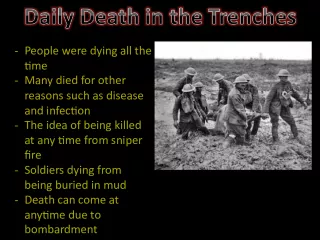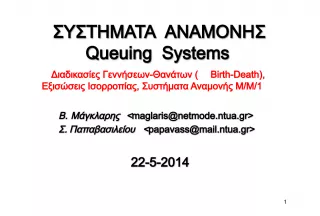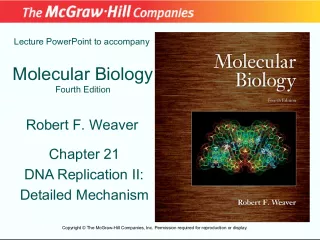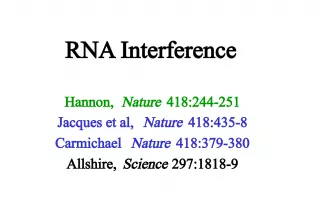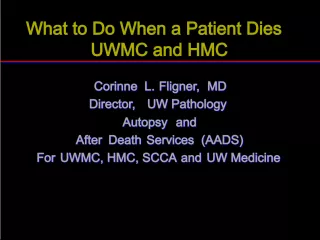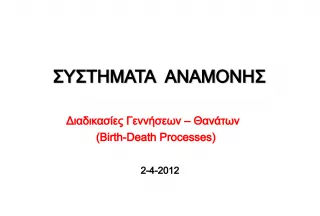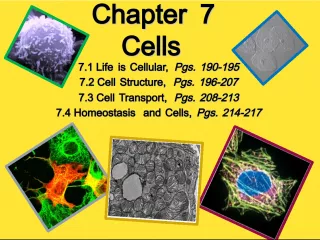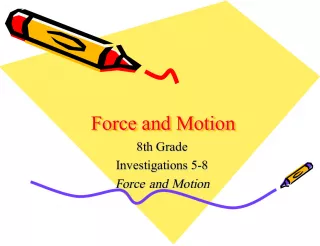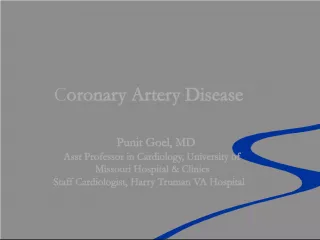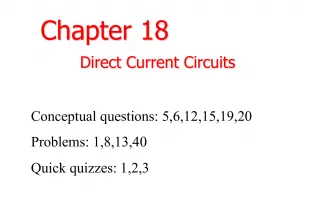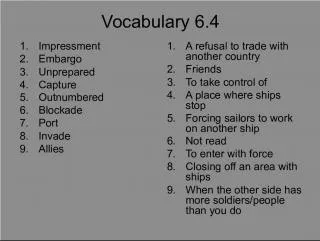Unit Chapter - Death Manner, Mechanism, Cause, and Time
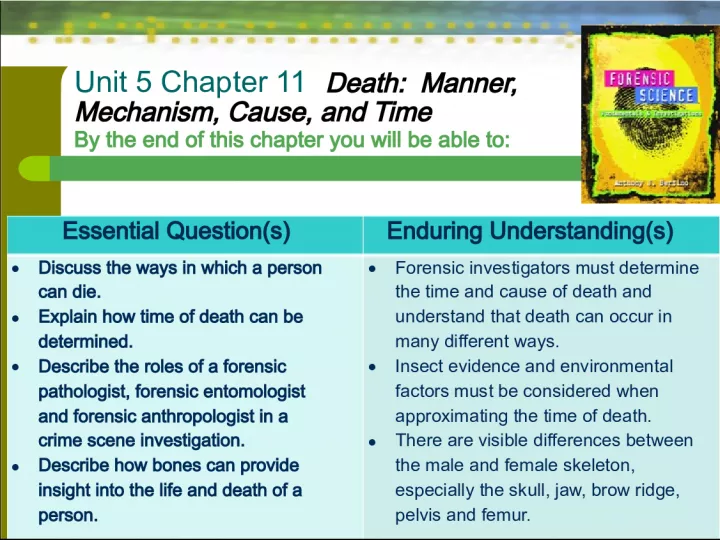

In this chapter, we will explore the different ways in which a person can die and the various factors that contribute to the cause and manner of death. We
- Uploaded on | 3 Views
-
 guterre
guterre
About Unit Chapter - Death Manner, Mechanism, Cause, and Time
PowerPoint presentation about 'Unit Chapter - Death Manner, Mechanism, Cause, and Time'. This presentation describes the topic on In this chapter, we will explore the different ways in which a person can die and the various factors that contribute to the cause and manner of death. We. The key topics included in this slideshow are . Download this presentation absolutely free.
Presentation Transcript
Slide11Unit 5 Chapter 11 Death: Manner, Mechanism, Cause, and Time By the end of this chapter you will be able to: Essential Question(s) Enduring Understanding(s) Discuss the ways in which a person can die. Explain how time of death can be determined. Describe the roles of a forensic pathologist, forensic entomologist and forensic anthropologist in a crime scene investigation. Describe how bones can provide insight into the life and death of a person. Forensic investigators must determine the time and cause of death and understand that death can occur in many different ways. Insect evidence and environmental factors must be considered when approximating the time of death. There are visible differences between the male and female skeleton, especially the skull, jaw, brow ridge, pelvis and femur.
Slide2forensic science: fundamentals & investigations, Chapter 112 Death Death The Manner of Death The manner of death can be natural, accidental, suicidal, homicidal, or undetermined. Sometimes it is difficult to determine the manner of death. The most common manner of death is natural. http:// Body Farm clip
Slide3forensic science: fundamentals & investigations, Chapter 113 Death Death Cause and Mechanism of Death The reason for the death is the cause of the death. (ex: shooting) The specific change in the body that brought about the cessation of life is the mechanism of death. (ex: loss of blood)
Slide4forensic science: fundamentals & investigations, Chapter 114 Time of Death— Livor Mortis The Leaden-Color of Death When red blood cells break down, they turn a bluish-purple. With decomposition, blood seeps down and settles in the lower parts of a body. The discoloration that accompanies this becomes permanent after 8 hours. Warmth accelerates the process.
Slide5forensic science: fundamentals & investigations, Chapter 115 Time of Death— Rigor Mortis The Rigidity of Death At death, skeletal muscles cannot relax. Without oxygen, calcium accumulates in these muscles. The muscles become stiff. This starts in the head and works its way down to the legs. After about 15 hours, the muscle fibers begin to dissolve, and softening begins.
Slide6forensic science: fundamentals & investigations, Chapter 116 Time of Death— Rigor Mortis At 12 hours after death, the body is at its most rigid state. If a body has no visible signs of rigor, it probably has been dead less than 2 hours or more than 48. If the body exhibits rigor only in the head and neck, the time of death is just over 2 hours. This stiffness will have disappeared for the most part after 36 hours.
Slide7forensic science: fundamentals & investigations, Chapter 117 Time of Death— Rigor Mortis Many factors affect when rigor mortis sets in and how long it lasts: – Ambient temperature – The weight of the body – The body’s clothing or lack of it – Any illness the person had at the time of death – The level of physical activity at the time of death – Sun exposure Cold: slows Warmth: accelerates Obese: slows Thin: accelerates Aerobic activity: accelerates Sleep: slows
Slide8forensic science: fundamentals & investigations, Chapter 118 Time after death Event Appearance Circumstances 2- 6 hours Rigor begins Body becomes stiff and stiffness moves down body Stiffness begins with the eyelids and jaw muscles after about three hours, then center of body stiffens, then arms and legs 12 hours Rigor complete Peak rigor is exhibited Entire body is rigid 15-36 hours Slow loss of rigor Loss of rigor in small muscle first followed by larger muscles. Rigor lost first in head and neck and lastly in bigger leg muscles 36-48 hours Rigor totally disappears Muscle become flaccid Many variables may extend some extend of rigor beyond the normal 36 hours Factors Affecting Rigor Event Effect Circumstances Temp Cold Inhibits rigor Slower onset and slower progression Warm Accelerates rigor Faster onset and faster progression Activity before death Aerobic exercise Accelerates rigor Lack of oxygen to muscle accelerates Sleep Slows rigor Muscles fully oxygenated will exhibit rigor more slowly Body weight Obesity Slows rigor Fat stores oxygen Thin Accelerates rigor Body loses oxygen quickly
Slide9forensic science: fundamentals & investigations, Chapter 119 Time of Death— Algor Mortis The Chill of Death In death a body no longer generates warmth and begins to cool down. To find the standard temperature of a corpse, a thermometer is inserted into the liver. Body heat is lost at about 1 to 1.5 degrees an hour. Time of death determined by temperature calculations is expressed as a range of time.
Slide10How long does it take for abody to cool? 1 st 12 hrs the body loses 1.4 °F per hour Next 12 hrs the body loses 0.7°F per hour – Cools faster in colder temps How much heat is lost during 1 st 12 hrs? 1.4°F x 12 = If body temp is less than 81.8°F the person died 12 hrs ago (or more) 16.8°F
Slide11Calculate TOD, body temp is90 °F? 98.6 °F - 90°F = # of hrs = 8.6°F/1.4°F # of hrs = The person died 6 hrs and 6 minutes prior to finding body 6.1 8.6°F
Slide12Calculate TOD, body temp is72 °F? During 1 st 12 hrs the body temp drops to 81.8 o F 81.8 °F - 72 °F = lost after 12 hrs # of hrs = 9.8°F / 0.7°F # of hrs = 12 + 14 = 26 hrs since death 9.8°F 14
Slide13Body Temp greater than 81.8 o F 98.6 o F – body temp = a /1.4 = # hrs since death Body Temp less than 81.8 o F 81.8 o F – body temp = a / 0.7 = b + 12 = # hrs since death Complete Activity 11-2 part A and B on pgs 328-330
Slide14forensic science: fundamentals & investigations, Chapter 1114 Time of Death— Stomach and Intestinal Contents Based on these specifics, give an estimate for each of these on how much time has passed since the meal was eaten: 1. Food is still present in the stomach. 2. The stomach is empty but food is found in the small intestine. 3. The small intestine is empty but waste is present in the large intestine. 0-2 hrs 4-6 hrs 12 hrs or more
Slide15forensic science: fundamentals & investigations, Chapter 1115 Time of Death— Stages of Decomposition Choose: A . Within 2 days. B . After 4 days. C . Within 6-10 days. 1. Fluids begin to leak from body openings as cell membranes rupture. 2. Discoloration of the face. 3. The skin sloughs off. 4. The skin blisters. 5. Green and purplish staining from blood decomposition. 6. The corpse bloats. 7. Eyeballs and other tissues liquefy. 8. The abdomen swells. 9. Marbling appearance on the skin. A B C A A B C C C http:// Time Lapse Video of Pig Decmop....
Slide16forensic science: fundamentals & investigations, Chapter 1116 Marbling Purification Fresh Bloat Active decay Advanced Decay Dry Remains
Slide17forensic science: fundamentals & investigations, Chapter 1117 Time of Death— Insects Besides recording data about the environment at a crime scene, a forensic entomologist collects insect evidence. Within minutes of a death, certain insects arrive to lay their eggs on the warm body. Blowflies are a common example. As a corpse progresses through the stages of decomposition, other kinds of insects arrive. http:// entomology clip http://www.youtube.com/watch?v=HBYmV B5yRA0
Slide18forensic science: fundamentals & investigations, Chapter 1118 Time of Death— Insects 1. Blowfly eggs can be found in the moist, warm areas of a corpse within 8 hours after death. 2. They will have progressed to the 1 st of their 3 larva stages within 20 hours. 3. By the 4 th or 5 th day they will have progressed to the 3 rd of their 3 larva stages.
Slide19forensic science: fundamentals & investigations, Chapter 1119 Time of Death— Insects 4. By the 8 th or 12 th day the larvae will migrate away from the corpse to a dry place. 5. Becoming pupa and immobile within 18-24 days, they will change from white to dark brown. 6. By the 21 st -24 th day the pupa cases will split open and adult blowflies (illustration of one shown above) will emerge. http://www.youtube.com/watch?v=mVN0arXmcF8&feature=related
Slide21Examples of Diptera (Flies)Informational Source: http://naturalsciences.org/files/documents/csi_tg_overview.doc Images: Top Left - http://www.scienceinschool.org/repository/images/issue2forensic3_large.jpg, Middle-Left: http://forensicfact.files.wordpress.com/2008/04/blowfly053.jpg, Top Right - http://users.usachoice.net/~swb/forensics/P1.jpg, Bottom - http://www.deathonline.net/decomposition/corpse_fauna/flies/index.htm Flesh Fly (Sarcophagidae) S triped thorax Blow & Greenbottle Flies (Calliphoridae) Metallic thorax and abdomen House Fly (Muscidae) Cheese Skipper (Piophilidae) Early Stage Decomposition Late Stage Decomposition Life Cycle of a Calliphoridae Fly
Slide22Examples of Coleoptera (Beetles)Informational Source: http://naturalsciences.org/files/documents/csi_tg_overview.doc Images: http://www.cals.ncsu.edu/course/ent425/library/spotid/coleoptera/coleoptera.html & http://www.forensicflies.com/beetles.htm Carrion Beetles ( Silphidae) Adults & larvae feed on fly larvae Early to Late Stage Decomposition Late Stage Decomposition Rove Beetles ( Staphylinidae ) Predator of fly eggs Early Stage Decomposition Hide Beetles ( Scarabidae ) Usually the last to arrive Clown Beetles ( Histeridae ) Predator of fly eggs Ham & Checkered Beetles ( Cleridae ) Predator of flies & beetles; also feed on dead tissue Skin Beetles ( Dermestidae ) Feed on dried skin & tissues
Slide23forensic science: fundamentals & investigations, Chapter 1123 Time of Death— Insects Because scientists know how long it takes for the various stages of development at given temperatures, forensics entomologists can determine when the insects arrived. Because life cycles are affected by fluctuations in the daily environmental conditions, insect evidence cannot provide an exact time of death. Insect evidence, nonetheless, can yield a close estimate. http:// www.pbs.org/wnet/nature/episodes/crime-scene- creatures/interactive-determine-the-time-of-death/4390 /
Slide24forensic science: fundamentals & investigations, Chapter 1124 . . . . . . . . . . . . . . . . . Summary . . . . . . . . . . . . . . . . . Summary A body decomposes through the 3 changes of livor, rigor, and algor mortis. Forensic scientists use evidence from these to estimate the time of death. They also use stomach contents and insect evidence to estimate the time of death. It is also important to remember how environmental factors can affect the estimated time of death.
